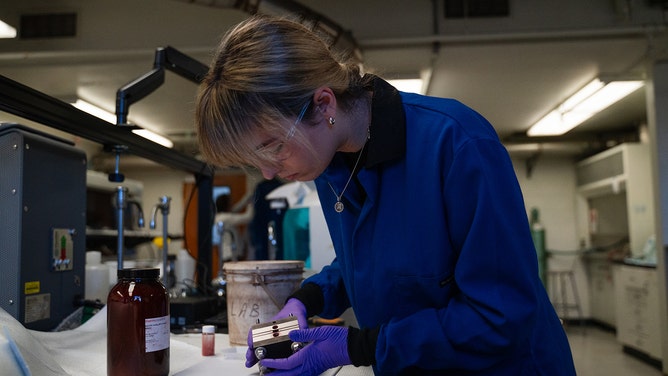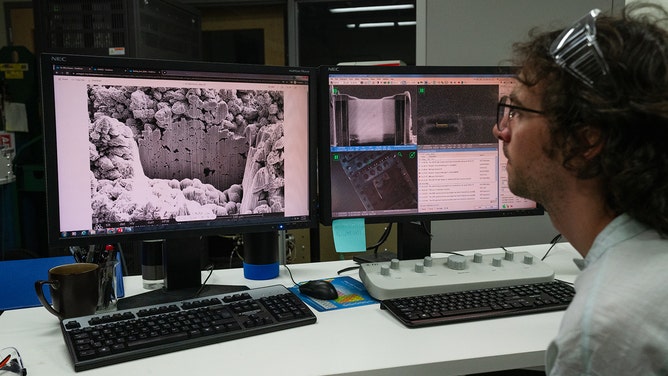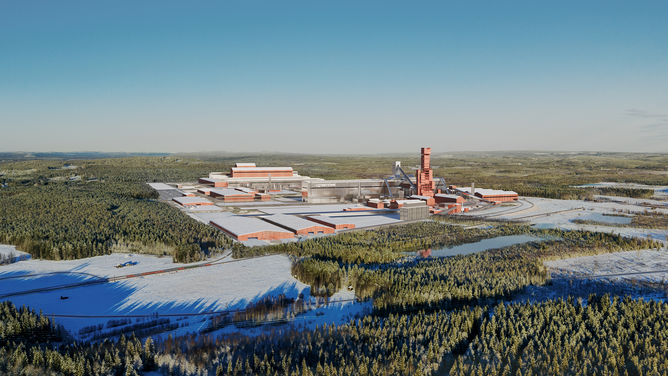New iron production process could cut carbon emissions from a dirty industry
H2 Green Steel, a company based in Sweden, says it has produced a production technique that leads to a reduction in emissions of up to 95 percent when compared with traditional steelmaking.
Sharp rise in pollution says report
The American Lung Association released the 2022 State of the Air report which showed sobering pollution numbers especially for California.
EUGENE, Ore. - A process that University of Oregon researchers say is cleaner and cheaper could be employed by steel mills to replace carbon-spewing blast furnaces.
Researchers published their findings in the journal Joule, which said electrochemistry can be used in the production of steel instead of reverting to burning of fossil fuels.
"Decarbonizing this step would do roughly as much to reduce greenhouse gas emissions as converting every gas-guzzling vehicle on the roads to electric," Paul Kempler, a research assistant professor at the University of Oregon and director of the Electrochemistry Masters Internship Program, said in a statement. "The reason we got excited about this chemistry is that our reactants are two things that are very cheap: saltwater and iron oxide."

Postdoc Ana Konovalova shows off the electrochemical cell designed in Paul Kempler’s lab.
(University of Oregon / FOX Weather)
The research team said that the byproducts of the chemical reaction can also be repurposed, leading to less waste.
According to the U.S. Energy Information Administration, the steel industry is responsible for about 7% of the annual production of carbon dioxide, which is more than industries such as aviation.

Louka Moutarlier, a PhD student in Kempler’s lab, examines scanning electron microscope images of the surface of the iron film that is collected on the electrode. The lab is using these images to understand the mechanism by which iron is grown on the electrode surface.
(University of Oregon / FOX Weather)
In 2022, almost 2 billion metric tons of steel were produced for cars, buildings and other uses around the globe.
Its primary production is from a blast furnace that produces iron from iron ore, coal and limestone and is one of the largest energy consumers in the manufacturing sector.
There are currently over 100 sites that the U.S. Environmental Protection Agency recognizes as either an iron or steel mill around the country.

Iron and steel production map
(EPA / FOX Weather)
EPA PROPOSES NEW DRINKING WATER STANDARDS TO PROTECT AGAINST CHEMICAL POLLUTION
Company seeks to make waves in industry
A massive steel plant outside of Boden, Sweden, is expected to come online as early as next year and produce steel with up to 95% lower emissions than standard coke-fired blast furnaces.
H2 Green Steel is a Swedish startup that intends to make products for customers such as Mercedes-Benz, BMW and IKEA.
The current global steelmaking process, the company says, sends more than 2.6 billion metric tons of CO2 emissions annually into the atmosphere, which is three times as much as the aviation industry.

H2 Green Steel artist rendering
(H2 Green Steel / FOX Weather)
"We have gone through this process working side-by-side with many different stakeholders. We have worked as one big team, broken new ground and found innovative solutions in structures and ways of working that are normally rigid. The result is a historical milestone for one of the biggest decarbonization ventures globally," Otto Gernandt, chief financial officer of H2 Green Steel, said in a statement.
Instead of using coal in blast furnaces, the company plans on using green hydrogen in the steelmaking process.
Even with the addition of the plant, the European Union will rank far behind countries that lead in production, such as China, India and Japan.
